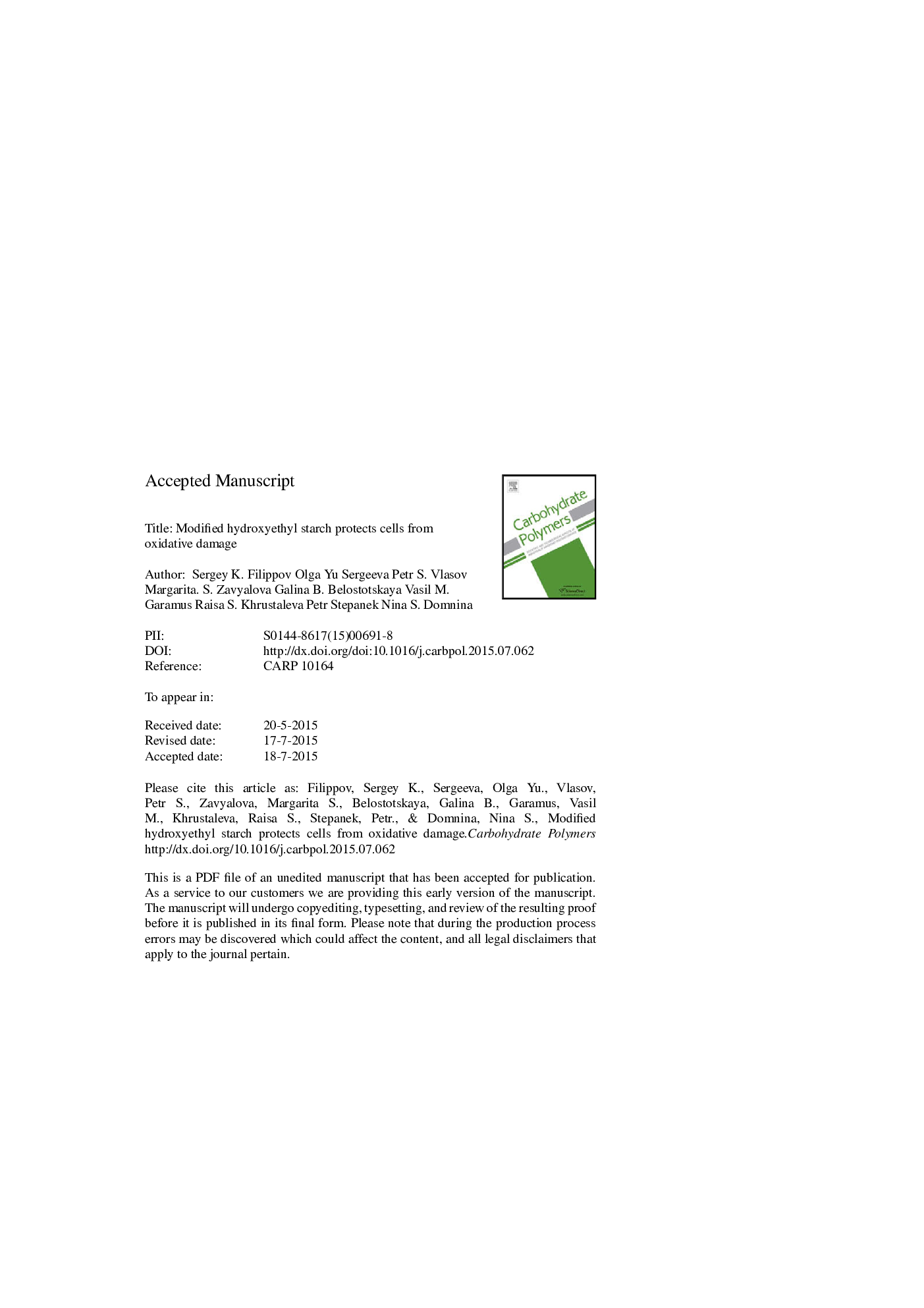| Article ID | Journal | Published Year | Pages | File Type |
|---|---|---|---|---|
| 7787049 | Carbohydrate Polymers | 2015 | 38 Pages |
Abstract
This article describes the synthesis of novel starch-antioxidant conjugates, which show great potential for biomedical applications to protect cells from oxidative damage. These conjugates were synthesized by the modification of a hydroxyethyl starch (molecular weight = 200,000 g/mol) with various sterically hindered phenols that differ in radical scavenging activity. They possess substantial radical scavenging activity toward a model free radical. It was found that the polymer conjugate conformation depends on the antioxidant structure and degree of substitution. We constructed the complete conformational phase behavior for the polymers with increasing degrees of substitution from small-angle neutron scattering data. It was observed that the conjugate conformation changes are the result of water shifting from a thermodynamically favorable solvent to an unfavorable one, a process that then leads to compaction of the conjugate. We selected the conjugates that possess high substitution degree but still exhibit coil conformation for biological studies. The high efficiency of the conjugates was confirmed by different in vitro (hypotonic hemolysis of erythrocytes/osmotic resistance of erythrocytes and the change of [Ca2+]i inside freshly isolated cardiomyocytes) and in vivo (acute hemorrhage/massive blood loss) methods.
Related Topics
Physical Sciences and Engineering
Chemistry
Organic Chemistry
Authors
Sergey K. Filippov, Olga Yu. Sergeeva, Petr S. Vlasov, Margarita S. Zavyalova, Galina B. Belostotskaya, Vasil M. Garamus, Raisa S. Khrustaleva, Petr Stepanek, Nina S. Domnina,
